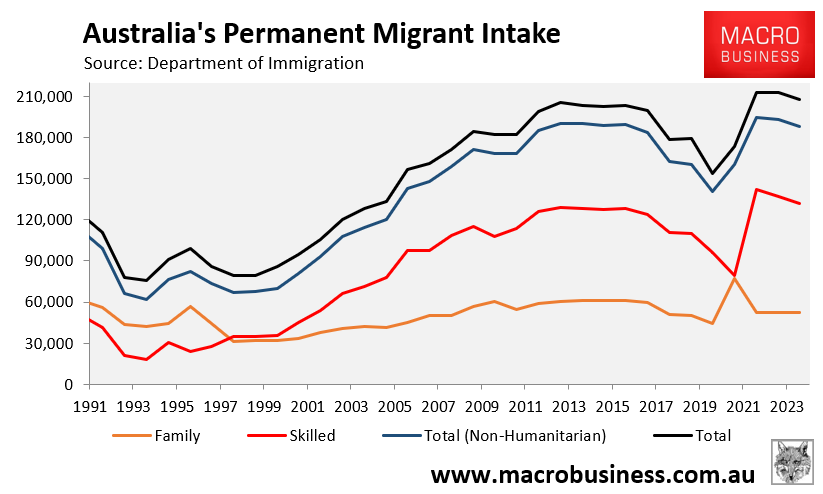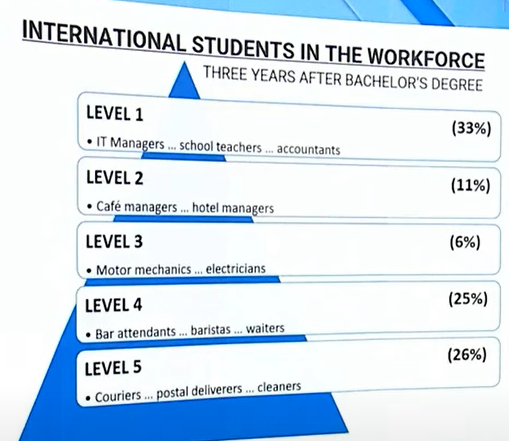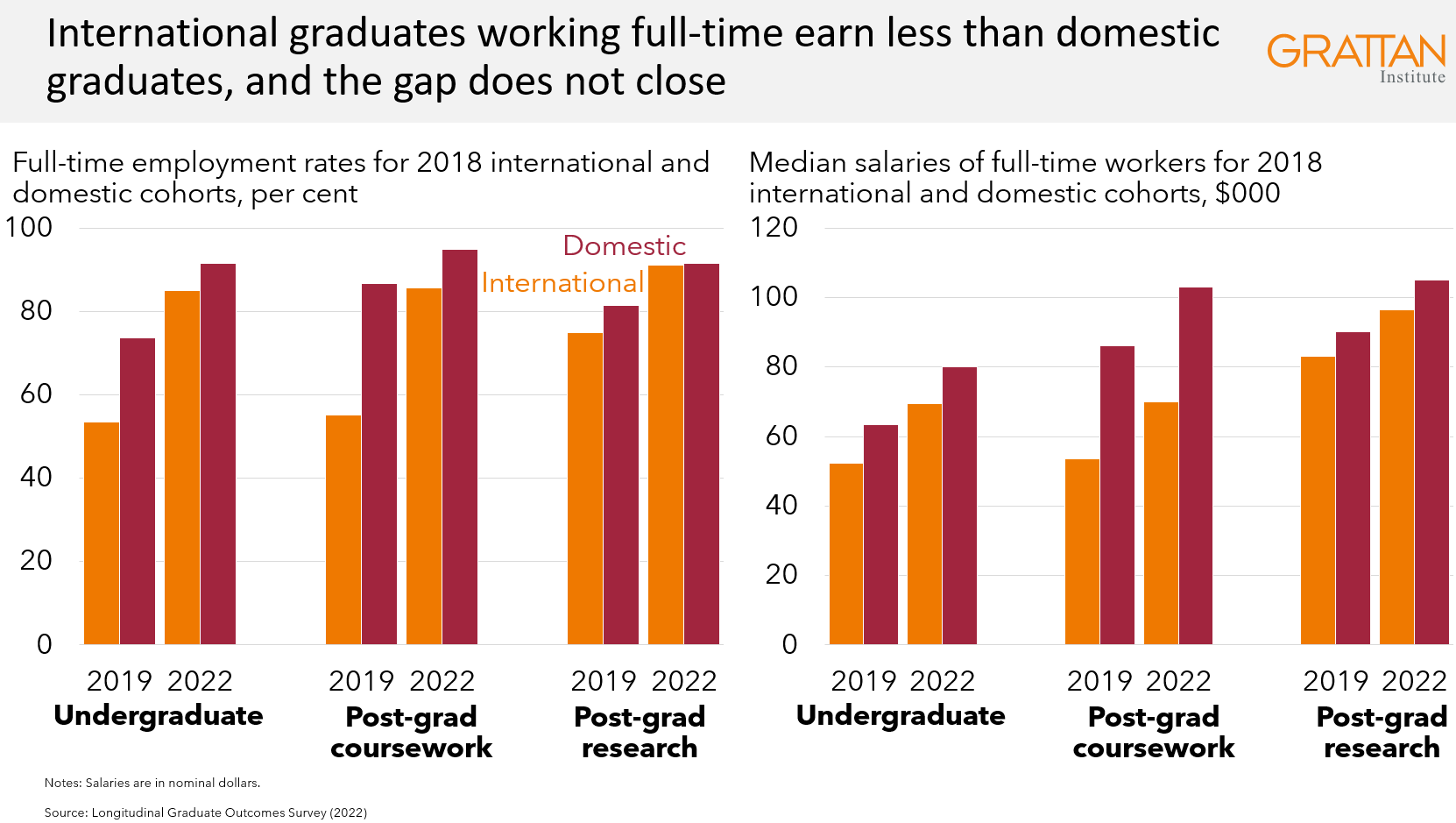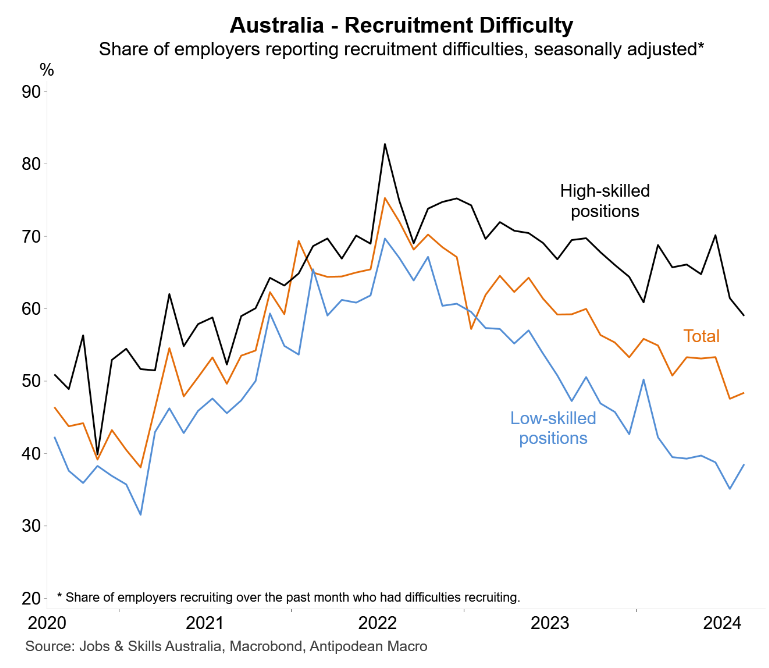Australia runs a large skilled migration program.
Over the past 20 years, 2.3 million permanent skilled visas have been issued in Australia.

Earlier this year, the Committee for Economic Development of Australia (CEDA) released research showing that half of skilled migrants work in overqualified occupations and earn far lower incomes than locals with the same qualifications.
Migrants who have been in the country for 2-6 years earn at least 10% less than people born in Australia, even if they have similar skills (chart below).

CEDA also notes that it takes up to 15 years for their earnings to catch up.
Analysis from Adelaide University’s George Tan likewise showed that about 43% of skilled migrants were not employed in their nominated occupation, under the state-government-sponsored visa scheme.
Moreover, the vast majority of skilled migrants working in retail, hospitality, and service manager roles were overqualified for their jobs.

Meanwhile, the Migration Review found that 51% of international university graduates with bachelor’s degrees were working in unskilled jobs three years after graduation:

Source: Migration Review (2023)
The Graduate Outcome Survey also found that student graduates earn significantly less than local born graduates and have worse labour market outcomes:

A new alliance of more than 50 business groups and unions, named Activate Australia’s Skills, claims 621,000 permanent skilled migrants (44%) are working below their skill level. This is despite two-thirds of those migrants having arrived on the government’s skilled migration program.
The group has called on the federal government to take over skills recognition processes from professional bodies and to implement a HECS/HELP-style loan scheme to help migrants pay for “cost prohibitive” training and registration requirements.
“We get … engineers and doctors who are driving rideshare or stacking shelves”, Chief executive of Settlement Services Australia, Violet Roumeliotis said.
“We have qualified nurses who worked for many years in other countries here in Australia, but they’re cleaning, they’re working in retail or hospitality”.
“It’s quite an extraordinary situation”.
“We’ve got these highly skilled workers here ready to go”.
“We just need to activate that pool and match them with the skill shortages, because it’s going to increase productivity”, she said.
Why is Australia running such a large permanent skilled migration program when nearly half of the migrants that we import are not actually qualified to work in the field in which we imported them?
Surely, the optimal solution is to make all skilled visas employer-sponsored so that skilled migrants enter jobs in their field of qualification as soon as they arrive?
The fact that Australia’s population has surged by 8.4 million people (45%) this century alone, yet skills shortages are worse than ever, demonstrates the fallacies of Australia’s purportedly ‘skilled’ migration system.
Despite huge volumes of so-called ‘skilled’ migration, Australia continues to suffer from a chronic shortage of highly-skilled workers while being oversupplied with lower-skilled workers:

Clearly, Australia requires an immigration system that is significantly smaller in size and focused on the skills we actually need.

